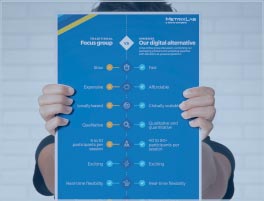Merchandising: Determining which products will generate the greatest impact
Making smart merchandising decisions
Making smart merchandising decisions
Solution: SHOP Adjacency Analysis
The challenge
The results
Firstly, we identified 4 main style groups (from 37 style attributes) and 5 occasion groups. Target brands for the ‘Misses’ section were then sorted by style and occasions.
We identified that the target brands were well represented across the style and occasion groups. The exercise also revealed additional brands that could be optimized. The results uncovered distinctly different attitudes towards the target brands, indicating potential for further optimization of these brands in-store.
How we got there
MetrixLab used a card sort adjacency exercise that required respondents to react to a series of inputs. Respondents were asked to complete several drag-and-drop exercises that involved grouping cards on a whiteboard. They were tasked with creating groups of style attributes and then assigning brands to these. Finally, they were asked to assign occasions to the style and brand groupings. All groupings were based on the strength of the perceived relationship between the style, brand and occasion.





